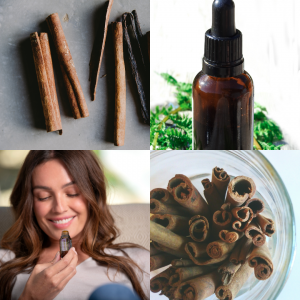
Many are familiar with the sweet taste and warm, earthy smell of cinnamon. One can barely move through the supermarket or browse online without seeing this spice sprinkled provocatively atop a yummy beverage, baked good, or meal. What is not well known; however, is that cinnamon is much more than a sense enhancer.
In my latest article, I discuss the various types of cinnamon and how they support wellness. Topics include:
- The differences between the two most popular cinnamons, Ceylon and Cassia.
- The benefits that all types of cinnamons share including balancing blood sugar, cardiometabolic support, and immune health.
- The differences between cinnamon bark oil (Cinnamomum zeylanicum) and cassia oil (Cinnamomum cassia).
- The concerns with a constituent, coumarin, found in cassia.
- Cassia’s usage and safety.
Click here to learn more about this amazing spice and oil.
In a follow up article, I will dive deeper into the coumarin controversy and review more specific uses of cassia essential oil.
Learn How Naturopathic Medicine Can Support Your Health.

Specializing in Mental and Emotional Health, Women’s Health, and Digestive Health
Click here to discover more.
Access my free two-part video series on essential oils for brain, mood, and hormonal balance!
This material is for information purposes only and is not intended to diagnose, treat, or prescribe for any illness. You should check with your doctor regarding implementing any new strategies into your wellness regime. These statements have not been evaluated by the FDA. (Affiliation link.)
According to experts and the World Health Organization (WHO), there is no approved standard of care treatment, cure, or preventative for COVID-19. Supportive measures and containment are in full force as a result. Please see the CDC website and your state’s website for more information and updates. They also state when to contact your physician related to symptoms and travel history, exposures.
Disclaimer: This information is applicable ONLY for therapeutic quality essential oils. This information DOES NOT apply to essential oils that have not been tested for purity and standardized constituents. There is no quality control in the United States, and oils labeled as “100% pure” need only to contain 5% of the actual oil. The rest of the bottle can be filled with fillers and sometimes toxic ingredients that can irritate the skin. The studies are not based solely on a specific brand of an essential oil, unless stated. Please read the full study for more information.
Thanks Canva and Pixabay.



